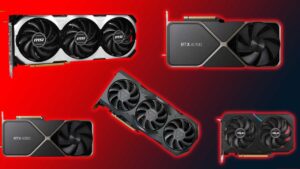Introduction:
ASML, a leading provider of photolithography equipment, has been at the forefront of pushing the boundaries of semiconductor manufacturing technology.Among its groundbreaking innovations is the Extreme Ultraviolet (EUV) lithography, which has revolutionized the semiconductor industry by enabling the production of smaller and more powerful chips. With the recent development of high Numerical Aperture (NA) EUV technology, ASML is once again poised to reshape the landscape of chip manufacturing. In this blog post, we delve into the potential cost trajectory of ASML’s upcoming Hyper NA EUV technology based on historical trends.
Follow us on Linkedin for everything around Semiconductors & AI
Understanding ASML’s EUV Technology Evolution:
Before delving into the cost projections for Hyper NA EUV technology, let’s first review ASML’s journey in EUV technology development:
The three iterations of EUV lithography by ASML represent significant progress in semiconductor manufacturing technology, primarily driven by improvements in numerical aperture (NA). Let’s compare them:
0.3 NA EUV:
- This was ASML’s initial entry into EUV lithography, marking a crucial milestone in the development of this technology.
- With a numerical aperture of 0.3, it offered a stepping stone towards utilizing extreme ultraviolet light for chip manufacturing.
- While it laid the groundwork for EUV lithography, its relatively low NA limited its resolution and chip density capabilities.
0.55 High NA EUV:
- Building upon the foundation laid by the 0.3 NA EUV, ASML introduced the High NA EUV technology with a significant improvement in numerical aperture, reaching 0.55.
- This enhancement allowed for finer resolution and increased chip density compared to its predecessor, addressing some of the limitations of the 0.3 NA EUV.
- However, the higher numerical aperture also came with increased manufacturing costs.
0.7 Hyper NA EUV (In Progress):
- ASML is currently working on developing Hyper NA EUV technology, aiming to achieve an unprecedented numerical aperture of 0.7.
- This advancement is expected to further improve resolution and chip density, pushing the limits of chip manufacturing even further.
- Achieving a higher NA of 0.7 could enable even smaller feature sizes and higher chip performance, potentially revolutionizing the semiconductor industry once again.
In summary, each iteration represents a significant advancement over its predecessor, with improvements in numerical aperture leading to finer resolution and higher chip density. The Hyper NA EUV technology, with its planned NA of 0.7, holds promise for further pushing the boundaries of chip manufacturing. However, it’s essential to note that higher NA typically comes with increased complexity and manufacturing costs.
Read More: How NVIDIA GPUs have Evolved From Tesla to Ampere to Hopper – techovedas
Analyzing Cost Trends:
To forecast the potential cost of ASML’s Hyper NA EUV technology, let’s examine the historical cost trends of EUV systems:
- 0.3 NA EUV: Priced at approximately $200 million, the initial 0.3 NA EUV systems served as a benchmark for the cost of entry into EUV lithography.
- 0.55 High NA EUV: With a higher numerical aperture and enhanced capabilities, the cost of 0.55 High NA EUV systems rose to around $380 million, reflecting the increased complexity and sophistication of the technology.
Read More:5 Reasons OpenAI become World’s 3rd Largest Startup in Just 6 years – techovedas
Projection for Hyper NA EUV Cost:
Based on the observed trend, it is reasonable to anticipate a further increase in the cost of Hyper NA EUV technology compared to its predecessors. However, pinpointing an exact figure of $600 million requires a cautious approach due to several factors:
- Technological Complexity: The Hyper NA EUV technology represents a significant leap in numerical aperture, which likely entails greater technological complexity and manufacturing challenges. These factors could contribute to a higher cost of development and production.
- Economies of Scale: As ASML continues to refine its manufacturing processes and scale up production, economies of scale could potentially offset some of the cost increases associated with Hyper NA EUV technology. However, the extent to which these economies of scale will influence the final cost remains uncertain.
- Market Dynamics: The semiconductor industry is characterized by dynamic market forces, including competition among manufacturers, moreover, shifts in demand, and evolving technology trends. These factors can impact pricing strategies and market acceptance of new technologies, ultimately influencing the cost trajectory of Hyper NA EUV systems.
Read More: What is Artificial General Intelligence (AGI)and Why Should You Care? – techovedas
Conclusion:
In conclusion, while it is plausible to expect a higher cost for ASML’s Hyper NA EUV technology compared to its predecessors, pinpointing an exact figure of $600 million requires careful consideration of various factors.
Nonetheless, the development of Hyper NA EUV technology represents a significant milestone in semiconductor manufacturing, promising to unlock new possibilities for chip performance and innovation.
As ASML continues to push the boundaries of lithography technology, the industry eagerly awaits the commercialization of its systems and the transformative impact they will have on the semiconductor landscape.



